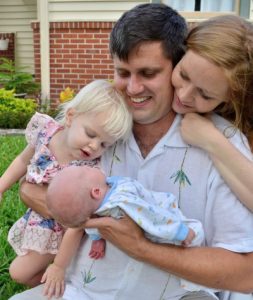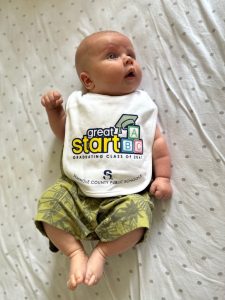This is a message from the new editor of reimaginED.

For decades, Florida has expanded the educational options available to families. But some of the hardest and most important work is yet to come.
I see the progress to date and the work ahead through the needs of my own family—though neither of our children yet old enough to start kindergarten.
Our family lives in Sanford, Florida, a few blocks from a public elementary school. Part of me looks forward to walking my now-2-year-old daughter to school and back home every day.
But we have other options. Many of our neighbors send their kids to a public charter school a short drive away. A nearby science magnet school might be an even better fit. My daughter's current obsession is the solar system. A few months ago, she stopped by Goldsboro Elementary for a tree planting ceremony. She received an impromptu tour of the Kids Space Center. The episode remains a fixture in her frequent monologues.

Will he be part of Seminole County Public Schools' class of 2041?
In May, my wife and I welcomed our son into the world. At the hospital, we received a bib from the Seminole County school district that claimed him as part of its 2041 graduating class.
As a member of one of the district's earlier graduating classes, I appreciate the sentiment.
I also know that Florida school districts can no longer assume that every baby born within their borders will grow up to attend schools they operate. Our local Catholic school offers a well-regarded academic program that aligns with our family’s faith. Thanks to Florida's proliferation of scholarship programs, it can enroll students who reflect the diversity of our community.
But we may opt not to enroll our children in any school. By the time our son is old enough for kindergarten, all families in the state will have access to scholarships that support a mix-and-match approach to education.
Mixing and matching describes our daughter’s current educational arrangement. She goes to preschool three mornings a week. We intersperse that conventional learning with a variety of other experiences: an outdoor school for toddlers, swimming lessons, free days at the park and the library.
I sometimes worry that she would find spending six hours a day sitting still in a conventional classroom excruciatingly dull by comparison. I wonder if we'd prefer to use a scholarship to support a diverse assemblage of learning experiences, rather than rely on a school to deliver them all in a single package.
If we do find a school that works for our children, it will not be enough. They'll need access to learning opportunities that prepare them to thrive in the adult world—learning that often happens best outside school walls. They might need tutoring or other supplemental learning opportunities. They'll definitely need useful ways to spend their time during Florida's sweltering summers.
Our family—really, all families—could use some help navigating all these choices and assembling a coherent program for each of our children.
My wife made a career teaching high school English at well-regarded charter school networks of New Orleans. But we quickly learned that public school teaching is simply incompatible with being a fully present parent to an infant and a toddler. She currently works part time teaching advanced English courses remotely to immigrant students in other states. She earns more money per hour, and enjoys far more flexibility, than she could ever find in a traditional classroom.
Her experience inspires my zeal to push the boundaries of a teaching profession that lacks the flexibility, advancement opportunities, and collegial collaboration that knowledge workers in other fields have come to expect.
All around us, I see unrealized possibilities. A 13-minute drive from our home is PSI High, a high-performing jewel of our school district, a seeming success story in a mixed bag of high-profile efforts to reimagine high schools. It has more students who want to attend than spots to enroll them, and no shortage of teachers eager to work with its project-based curriculum. But it remains a niche program, and there's no talk of scaling it to meet the burgeoning demand from teachers hoping to work there or students hoping to learn there.
Scale is one thing that sets Florida apart. Nearly half of our state's more than 3 million students attend some option other than their assigned public school. And that array of options will only grow more diverse and more complex.
So far this year, Step Up For Students (which hosts this blog and pays my salary) has approved nearly 290,000 applications for the state's newly expanded scholarship programs. The scholarships' potential uses have expanded beyond traditional private schools. Families can use them to pay for public-school classes, online courses, part-time tutoring, homeschool curricula, and other options instead of, or in addition to, school tuition.
Our next phase of work involves building the infrastructure that pushes this evolution toward greater customization further and helps realize its potential.
We need to build systems that allow families to make informed decisions, not just about where to send their children to school, but about what combination of learning products and services will meet their children's needs, and how they all fit together.
We will need to eliminate the walls between schools and communities and help families seamlessly cross boundaries between public schools and private learning options.
We will need to help promising schools, educators and entrepreneurs offer their services to all students who stand to benefit.
We will need to partner with schools and families to create the conditions for educators to do their best work—which for many, especially those who are young parents, will look nothing like a conventional six-hour school day in a typical classroom.
At reimaginED, we will offer a clear-eyed look at how this progress is unfolding in Florida. Along the way, we’ll highlight challenges, barriers, opportunities, promise and potential. Our goal is to learn quickly and inform the work happening across the country.
If you have tips, insights, ideas, or suggestions, please don’t hesitate to drop me a line.